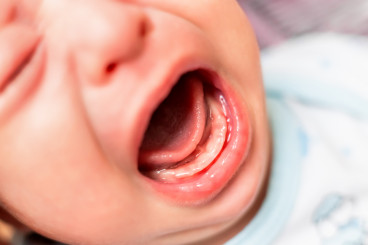Mandible
The mandible, commonly referred to as the lower jaw, is a critical component of the human skull and plays a significant role in oral and dental health. It is the largest and strongest bone in the face, forming the lower part of the jawline and providing structure to the face. The mandible is unique among the craniofacial bones as it is the only movable bone in the skull, allowing for essential functions such as speaking, chewing, and swallowing.
Anatomy of the Mandible
Anatomically, the mandible consists of several key parts:
Body: The horizontal portion of the mandible that supports the teeth and provides a surface for muscle attachment.
Ramuses (plural of ramus): The vertical extensions on either side of the mandible, which connect to the skull at the temporomandibular joint (TMJ).
Angle: The area where the body of the mandible meets the ramus, providing the characteristic shape of the jawline.
Mental Protuberance: The forward projection at the front of the mandible, commonly known as the chin.
Alveolar Process: The bony ridge that contains the sockets for the teeth, supporting both the lower incisors and molars.
The mandible is connected to the skull through the TMJ, which allows for a wide range of movements. This joint is crucial for the mechanical functions of the jaw, enabling it to open and close, as well as move side to side.
Functions of the Mandible
The mandible serves several vital functions, including:
Mastication (Chewing): The mandible moves up and down, allowing the teeth to grind and break down food into smaller pieces for digestion.
Articulation: It aids in the formation of sounds during speech by allowing the tongue and lips to move freely.
Support and Structure: The mandible provides facial structure, contributing to a person's appearance and profile.
Dental Considerations
From a dental perspective, the health of the mandible is essential. Several dental conditions can affect the mandible, including:
Mandibular Fractures: Breaks in the mandible can result from trauma, such as accidents or physical altercations. They can affect the alignment of the teeth and require surgical intervention.
Temporomandibular Joint Disorders (TMJ Disorders): These conditions can cause pain and dysfunction in the jaw joint and muscles, affecting jaw movement and leading to discomfort during chewing or speaking.
Osteomyelitis: An infection of the bone that can affect the mandible, often resulting from dental infections or systemic conditions. This requires prompt medical attention and treatment.
Periodontal Disease: Infections of the gums can lead to the loss of bone around the mandible, impacting tooth stability and overall oral health.
Treatment and Management
Dental professionals assess the mandible during routine examinations, evaluating its structure, alignment, and functionality. Various treatments may be necessary to address issues related to the mandible:
Orthodontic Treatment: Misalignment of the mandible and teeth can be corrected with braces or aligners, improving occlusion (the way teeth fit together).
Surgical Interventions: In cases of severe fractures, deformities, or TMJ disorders, surgical options may be necessary to restore function and alleviate pain.
Prosthetics: Missing teeth in the mandible can be replaced with dental implants or dentures, restoring functionality and aesthetics.
Physical Therapy: For TMJ disorders, exercises and therapies may be recommended to strengthen the jaw muscles and improve mobility.
Conclusion
Understanding the mandible's anatomy and functions is crucial for maintaining oral health. Its role in chewing, speaking, and supporting facial structure makes it a vital component of the human body. Regular dental check-ups can help monitor the health of the mandible and address any concerns early, ensuring optimal function and well-being.
Explore competitive dental treatment options at Dr. BestPrice today!



